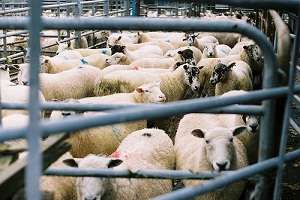Science measures animal welfare

A RECENT forum has questioned whether science can inform and improve animal welfare in research and production. The concept was explored at a joint Ag Institute Australia and Australian Society of Animal Protection seminar, looking at evidence for current best-practice.
Dr Teresa Collins, senior lecturer in Animal Welfare and Ethics at Murdoch University, says the welfare of livestock could be measured in a number of ways, although there is no universally agreed method, even between scientists.
"Welfare is a complex entity with different meanings to different stakeholder groups and involves both science-based and values-based tenets," she says.
"Some stakeholders often consider welfare as a means of biological functioning and consider that if an animal has all that it needs for growth and reproduction such as food, water, shelter and healthcare, then it has good welfare.
"Others consider for an animal to be in a state of good welfare it needs to be healthy and happy—so the animal can attain positive physical and mental well-being.
"This view acknowledges animals are sentient, capable of feeling pleasure and pain and seek environments where they gain positive experiences and avoid negative ones."
A method of assessment for measuring animal welfare would depend on the species and age of animal, type of production system and reason for making the measurement, Dr Collins says.
"The types of measures used may be different if one seeks to provide assurance for the community, feedback for producers on management interventions, compliance for policy/standards or if being done for research purposes," she says.
"The ideal scientific approach is to use a combination of methods that will measure the adequacy of both the supplied resources [inputs] and animal measures [outputs]."
Examples of inputs include the number of feeders and feed type, housing type and stocking rate while outputs include measures of an animal's growth rate, body condition score, behaviour and health status.
Dr Collins says the goal is to find the right combination of measures and to weigh the various factors into an index that can be formulated into an overall score.
She suggests the score could potentially be used for benchmarking by producers to compare like-enterprises in similar climatic areas and for regulating by industry and government to ensure minimum standards are met.
It could also provide farm assurance programs to provide consumer confidence or product differentiation.
"The idea is not to regard the index or score as a pass/fail system but one that allows producers to identify risk factors so they can be mitigated and any husbandry intervention evaluated to allow continual improvement," Dr Collins says.
Provided by Science Network WA


















